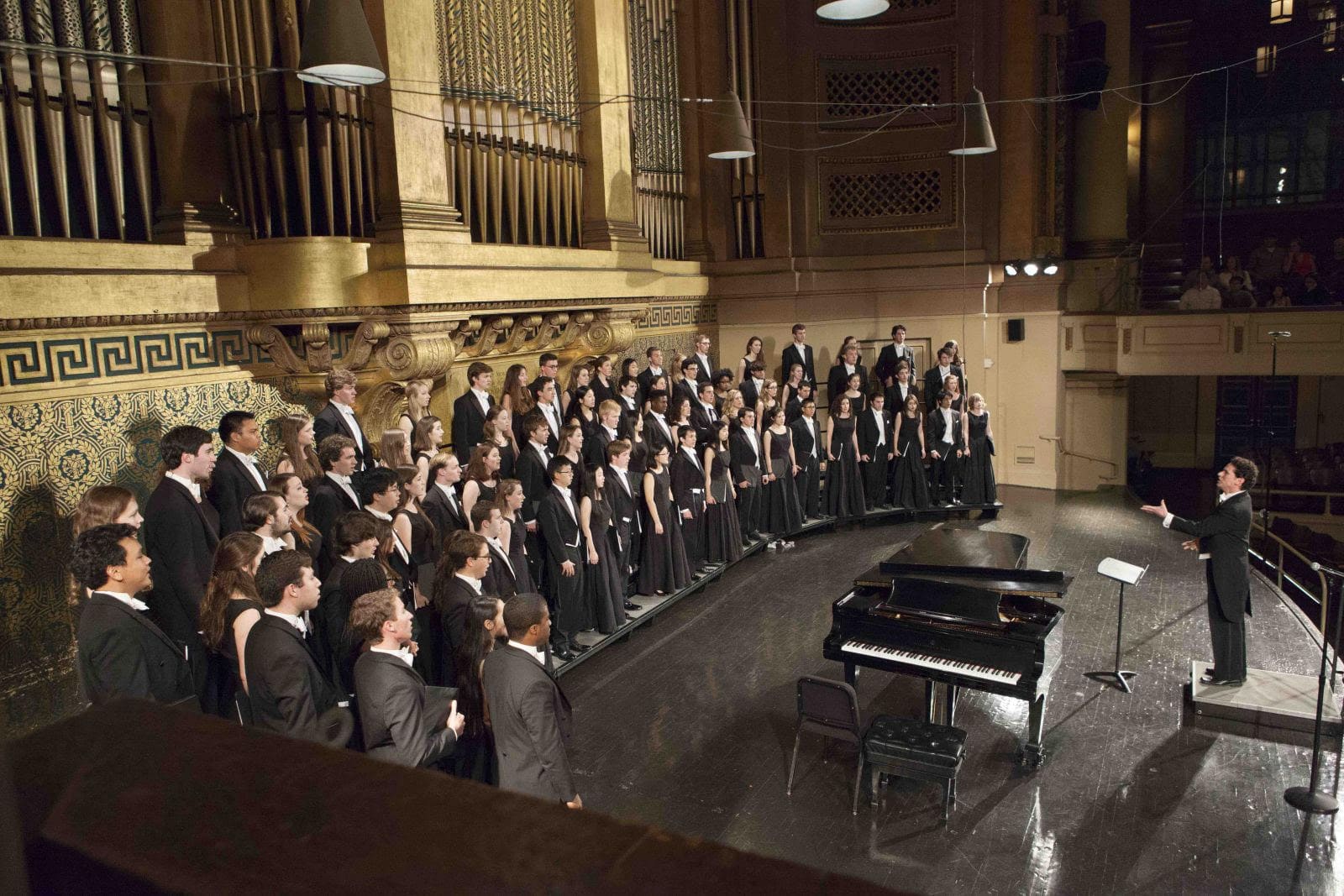
This year marks the 500th anniversary of the death of Renaissance artist Leonardo da Vinci. In a multi-movement, multimedia work for choir, full orchestra and film, contemporary American composer and performer Jocelyn Hagen seeks to honor da Vinci’s legacy.
On Saturday, the Yale Glee Club performed the East Coast premiere of Hagen’s piece, “The Notebooks of Leonardo da Vinci.” This work featured nine distinct movements, each accompanied by its own music video. The themes of the movements draw from the art, technology, science and nature that Da Vinci explored in his enigmatic notebooks.
“I really admire [Hagen’s] understanding of how to compose for voices and the way her music connects with audiences,” said Glee Club Director Jeffrey Douma.
When Hagen approached Douma in hopes of collaborating on this project, Douma said the opportunity struck him as “a great project” for the group. He explained that the Glee Club is a “liberal arts ensemble comprised of singers from all academic areas of the university,” leading him to be “especially drawn to the interdisciplinary aspect of the piece.”
The Glee Club commissions new works by established composers every year and sponsors the annual Fenno Health Award competition for current Yale College composers. For example, last year, the Glee Club commissioned a newly expanded orchestration of Caroline Shaw’s “Music in Common Time” in collaboration with the Yale Symphony Orchestra. The group also sponsors the Emerging Composers Competition, which is open to composers from anywhere in the world.
“Programming and commissioning new music is very important to me personally and has been central to the mission of the Glee Club for many decades,” said Douma.
Douma considers the preparation process for a collaboration between choir and orchestra to be different from rehearsals for a capella performances. He noted that when performing with an orchestra, the ensemble does not “get to hear what the complete piece actually sounds like until pretty late in the process, when the voices and instruments finally come together.”
Along with the special collaboration between the instrumentalists and vocalists, the piece incorporated a visual element through its nine short films. In order to facilitate this multimedia experience, the group employed a software program called “Muséik,” which synchronized the film in real time with Douma’s conducting during the live performance.
“This was a new experience for me as conductor — I didn’t have to worry about keeping time with the films, and watching them unfold definitely changed the way I heard the music,” said Douma.
The singers agreed that the preparation process differed from that of a typical Glee Club concert.
“The rehearsal process for this piece was maybe more frenzied than other preparation processes simply because of how wildly different each movement is, making it harder to transition between rehearsing the movements, as each carried completely new meanings and energy,” said Glee Club alto Lucy Ellis ’22. “Part of what made this piece so unique from a performance standpoint was that despite our knowing the piece so well after weeks of rehearsal, it continued to surprise us.”
Ellis said that the orchestra “added an almost cinematic layer to an already complex and rich vocal score.”
The Glee Club performed in a Woolsey Hall darkened to accommodate the screens, creating “a novel experience.”
Glee Club tenor Jackson Leipzig ’19 said that the group performed “its strongest rendition” of Hagen’s piece on Saturday evening.
“As a group, we felt well prepared for this concert, which allowed us to concentrate on the nuance and expressivity of our singing on Saturday night,” said Leipzig. He added that the group’s preparedness allowed the ensemble to go “above and beyond the fundamental considerations of choral performance” such as intonation, tone and rhythmic uniformity.
The concert also featured works by Franchinus Gaffurius and Josquin des Prez — composers from Da Vinci’s era.
Allison Park | allison.park@yale.edu







